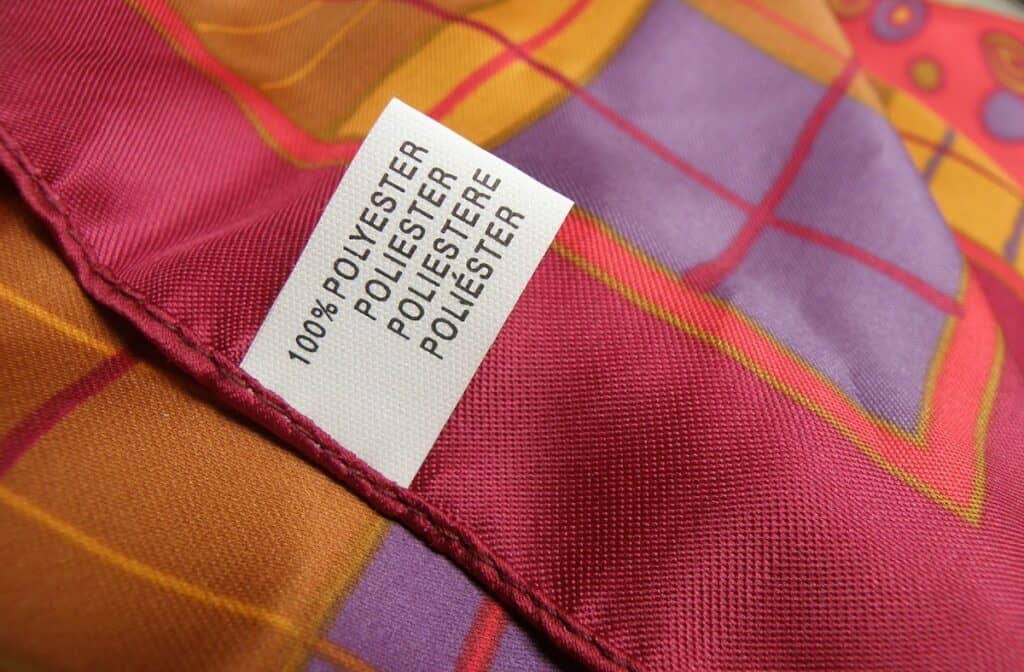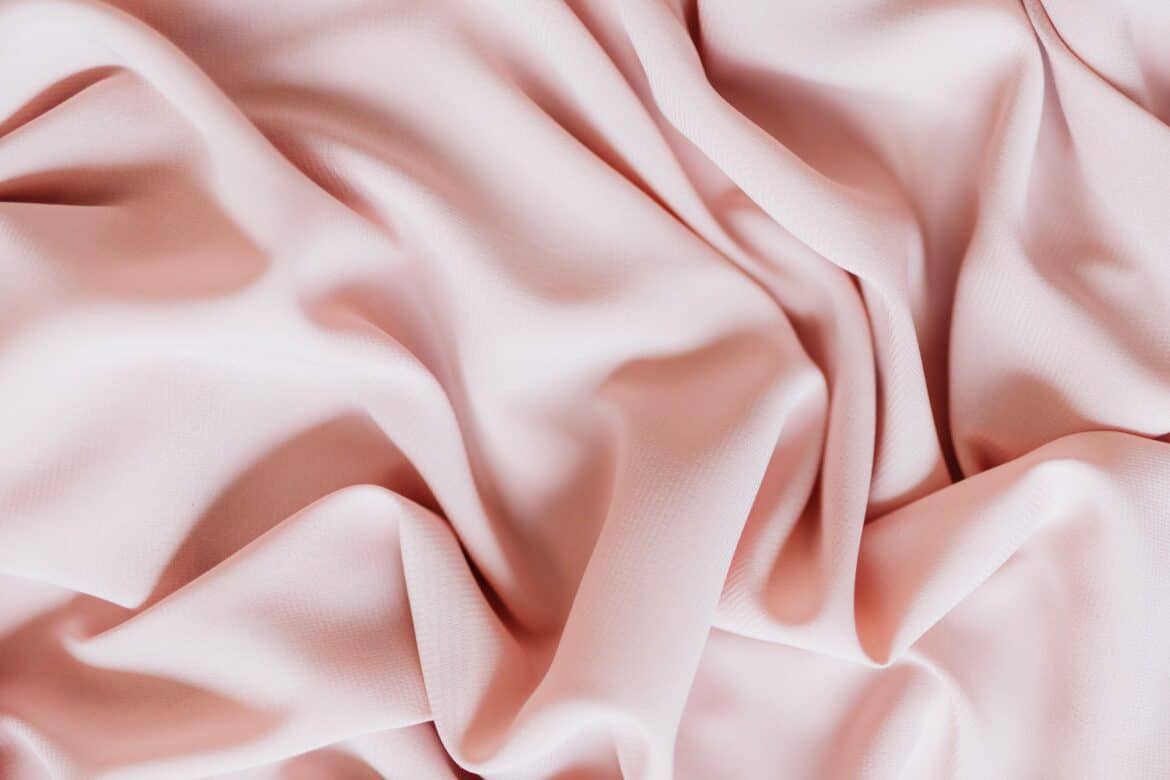When working with materials, you need to know the different options available and all their properties, to ensure that you are choosing the right item to suit your project, especially if you are making clothing.
Acrylic and polyester can both be used to make good quality items of clothing. The quality of clothing depends on a few things, but one of the biggest factors is the material used to make it. For items of clothing such as jackets and outdoor items, acrylic and polyester are quite common.
What’s the difference between acrylic and polyester? Acrylic and polyester are both made from plastic and are synthetic materials, although polyester is petroleum-based. Both are water-resistant and cheap to produce. Acrylic is even warmer and easier to dye, while polyester has better overall durability, longevity, and performance.
The two have many different pros and cons between them, and understanding what these are will help you better decide which one you would prefer.
All About Acrylic

Acrylic is a synthetic (man-made) fiber which is not sourced from nature (unlike cotton, linen, wool, etc.). It is primarily composed of polyacrylonitrile, a synthetic polymer resin.
Acrylic comes in a few different compositions, as the criteria of being considered acrylic is only to contain at least 85% acrylonitrile as the main monomer. That means acrylic can be manufactured to have slightly different characteristics.
Acrylic is created as a filament, which is cut into very short lengths, mimicking natural fibers. It is then spun into yarns or threads. These can be used in knitting, crocheting, or weaving – by hobbyists or by machines to make commercial textiles.
The best qualities of acrylics are that they are fairly durable, can be quite warm (due to their lack of breathability), and have low production costs. Acrylics are easy to care for, withstanding machine washes and lots of activity. These fabrics take color well and are fairly UV-resistant
This material usually has a soft feel, and while it retains heat well, keeping the wearer warm, it is also usually lightweight. It is a versatile and a cheaper option when compared to wool or cashmere.
The downsides to acrylic are that it isn’t breathable, can be on the rougher side (although this varies) when compared to linen or rayon, and is flammable. Many environmentally conscious consumers also avoid the material because it is a plastic and out of concerns for its production process.
All About Polyester

Polyester is another a synthetic fiber, one that has gotten a lot of flack. Its comparatively cheap production has made it a popular inclusion in clothing as a way to cut down on the costs of cotton production, which has not endeared this cheap synthetic to clothing and fashion enthusiasts!
Polyester is made through the chemical reaction between a petroleum-based alcohol (ethylene glycol) and an acid. The fibers are made through melt-spinning, where the plastic is heated and run through spinnerets, and are then processed in different ways to create varying thickness and lengths of fiber.
But in layman’s terms, polyester is a thermoplastic that requires oil to be produced.
Polyester has hydrophobic properties, and because of this, it has a low tendency to absorb water. This makes it water-resistant, or somewhat waterproof.
Polyester is a hardy textile. It withstands abrasions well, being incredibly durable and long-lasting. Polyester also has wrinkle-resistant qualities and retains its shape well.
A polyester skirt will look almost the same 10 years after you’ve bought it and if treated well, may not show major signs of wear and tear unless it begins to pill.
One of the negative characteristics is that it melts when in contact with high temperatures. It is not a breathable fabric (however this also can make it feel quite warm). It is harder to dye and can also feel somewhat sticky on the skin.
Like acrylic, polyester is a plastic material. Those who want to be environmentally conscious with their clothing and materials tend to avoid it.
Comparing Acrylic And Polyester
Polyester and acrylic are ubiquitous. Many of the clothing items, textiles and upholstery, and even plastics around you are made of polyester, acrylic, or either of the two blended with another material.
Knowing the characteristics and properties of acrylic and polyester individually is one thing, but how do the two compare against each other?
Here is a breakdown of the comparisons and differences between polyester and acrylic:
Composition And Performance
Acrylic and polyester are fairly similar in composition. They are both plastics, although their fibers are sourced from different materials. Both are synthetic and have a tendency to repel water (water-resistant).
Acrylic is warmer than polyester, but because it is even less breathable, acrylic is actually less popular for insulation clothing. Both are versatile and used to make cool and in-between weather clothing. They are used in warmer weather clothing as well, but are not as breathable and airy as a rayon or linen textile.
Both are susceptible to high heat and melt easily; you don’t want to use either in a potholder.
Polyester and acrylic can both be lightweight or thicker materials. As synthetic fibers, both can be manufactured to have slightly different characteristics.
Longevity And Durability
Acrylic and polyester are both fairly durable and have a long life, but polyester is more durable and has a longer life span. Compared to polyester, acrylic is not very resistant to abrasion or chemicals and has a shorter lifespan.
Polyester also has a better overall performance and better durability, as the fibers are very strong and very resistant to chemicals and abrasion.
One should also consider that acrylic is prone to pilling, which could age the garment quite a bit, although it does not affect its performance. Polyester does not pill as much and looks newer for longer.
Maintenance And Sustainability
Both polyester and acrylic are easy to care for and take little maintenance. If you do look closely, acrylic does require slightly more attention as it is more prone to shrinkage when washed or dried wrong or when exposed to higher temperatures; the acrylic garment might not fit you any longer.
There are environmental concerns with both sustainability and biodegradation for acrylic and polyester, as they are both synthetic plastics.
Polyester is probably the better choice when it comes to sustainability, as it has long durability and lifespan, and is easier to recycle. This makes it a comparatively better choice for the environment. However, it is still made of plastic, making it less sustainable when compared to a natural fiber or even rayon.
Acrylic poses several problems when it comes to sustainability, as it has a shorter lifespan and takes up to 200 years to decompose fully. It also releases toxins and chemicals into the environment as it breaks down.
If you are wanting to be more environmentally conscious, polyester is the way to go between the two, although there are other natural fibers that are more environmentally friendly. Just make sure the polyester garment you choose is good quality and long-lasting.
Acrylic And Polyester In Clothing
The properties of both acrylic and polyester mean little until you know their purpose when used as clothing, and the types of items they are used to make.
Polyester is most commonly used to make jackets and can make jackets using its fleece form or its smooth form. The smoother polyester form is usually used as the shell or lining, whereas the fleece form is used as an inner lining or backer.
There are also fleece polyester jackets as well, which are ideal for layering during the colder months. The softshell jacket is the most popular of polyester jackets and is a high-performing jacket used in sports and for the outdoors. It has good insulation and breathability.
Acrylic is popularly used in tracksuits and sweaters, and you won’t find too many acrylic jackets as they just do not perform as well as polyester. Although, acrylic can be used as a faux animal trim on jackets, in place of real animal fur.
Both acrylic and polyester appear in all manner of clothing, however, especially as blends with other materials such as cotton, rayon, and wool.
If you want to get started with making clothing with polyester fabric. I highly recommend this brand on Amazon. They have so many designs of fabric, and the woven texture provides the perfect foundation for shirts, dresses, and skirts.
Related Questions
Is Polyester or Acrylic Warmer?
Acrylic is warmer than polyester. It traps the heat exhaled by your body and uses this to keep you insulated. Acrylic is even less breathable though, so it is not ideal for when you know you are going to sweat or if the weather is going to get warmer.
It is best used to layer underneath a jacket, as it does not provide weather-resistant properties that you would need from an outer layer.
Is Acrylic Good Material?
Acrylic can be considered a good material if used for the right items. It is soft, lightweight, and warm, and has a wool-like feel without the wool-like price. It holds color well and is washable, and generally is hypoallergenic.
It is popularly used to make socks, gloves, hats, scarves, sweaters and other crocheted or knitted items. It is known as the winter fabric and is great especially when making winter accessories to keep your head, hands, and feet warm.
If mixed with wool, it can be more resistant to water and the weather and might have a few more properties that create a more versatile piece.
Acrylic is quite popular, but many don’t appreciate its comparatively poor longevity, the toxicity of chemicals used in its processing, or the environmentally-unfriendly materials.
The Difference Between Acrylic And Polyester
Acrylic and polyester are both synthetic, man-made fibers, but they do perform quite differently and are both suited for different uses.
Polyester does manage to keep in some warmth, but not as much as acrylic. However, it is breathable and more durable, making it better for use in outdoor clothing as well as anything meant to last longer.
Acrylic is warm and insulates heat well, however, it is not breathable and not as durable as polyester. For the perfect combination, choose an acrylic sweater to layer with and a polyester jacket to keep you protected from the weather!
Up Next: Acrylic Vs Wool – What’s The Difference?
